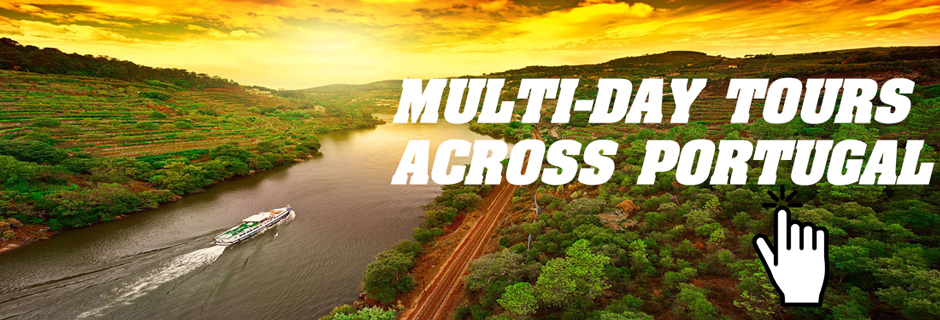3 Days in Lisbon: The Best Guide
Portugal’s capital city is no more an under-the-radar travel destination, with its memorable excellence serving as a scenery for current workmanship, food, and boutiques
Day 1
One thing strikes each first-time guest to Lisbon: It’s far excessively quiet for a capital. Individuals are in no hurry, avenues smell like vanilla baked goods on account of every last one of bread kitchens (no calorie-numbering there!), and ladies’ tans last at any rate a large portion of a year. (Sunbathing in March? Obviously.)
Begin off your day with breakfast at Tartine, a chic little pastry shop in the Chiado neighborhood, and request sweet bread (dependably naturally made), with spread and jam. Verify you request “bistro Americano,” since some espresso in Portugal interprets into a solitary (exceptionally solid) shot of coffee.
Legend has it that Lisbon was initially based on seven slopes so it is just suitable that you head to the most noteworthy one, São Jorge, where a hundreds of years old mansion with the same name still sits overlooking the whole notable downtown and the Tagus River. Jump on one of the unbelievable old yellow trolleys reeling some way or another up the limited roads of the slope.
On some way or another back, stroll through the Alfama neighborhood, the most established one in Lisbon, placed between the São Jorge stronghold and the Tagus. The range, a quiet maze of cobblestone avenues lined with unpredictably tiled structures, will make you sense that you have ventures back in time. On Tuesdays and Saturdays, skim through the Feira da Ladra, an enormous bug advertise that fills the boulevards with sellers offering obsolescents and artisanal items.
At night, head for Clube de Fado to appreciate some live fado (some call it the spirit music of Portugal) and nearby indulgences, for example, octopus greens and bacalhau com natas (broiler heated dried and salted codfish with onions, cream, and potatoes). A glass (or two) of red wine from the northern Douro district in Portugal will make for the ideal completion to your day.
Day 2
Lisbon’s most landmark stuffed territory is Belém. The social locale west of the downtown area offers probably the most generally essential and breathtaking sights. A ten-moment ride on Tram 15 or a train from the Cais do Sodré station will take you to the zone that was a beginning stage for some extraordinary Portuguese wayfarers embarking on their voyages of disclosure. Vasco da Gama spent his last night in the Jerónimos Monastery, a great sixteenth-century Gothic building with involved sculptural points of interest and sea themes, before leaving for India. Different highlights of the region incorporate the Museum of Carriages, the Belém Tower, and the Museu Coleção Berardo, which shows lives up to expectations by Andy Warhol, Pablo Picasso, Salvador Dalí, Jackson Pollock, and Jeff Koons.
One spot in Belém has ended up pretty much as well known as the verifiable milestones that encompass it. Individuals line up consistently at Pastéis de Belém, a pastry kitchen that has been offering Portugal’s celebrated custard tarts subsequent to the nineteenth century. Don’t try asking the cooks for the formula; its one of the nation’s most well-kept privileged insights.
Bounce on the train again and spend an evening on the shoreline in Cascais, a waterfront town 15 miles west of Lisbon that served as the regal family’s habitation for five centuries and is presently a go-to relax destination for big names. Notwithstanding the beautiful sand shorelines and decently safeguarded old structures, the town has an exhibit of fish restaurants that offer choice dishes. Attempt the squid with vegetables and potatoes at Luzmar or have some flame broiled sardines, a Portuguese exemplary, at one of the numerous waterfront eating spots overlooking the narrows.
Day 3
Sintra, a pure town just a couple of miles west of Lisbon, is your ideal children’s story mountain escape. Assembled at the foot of the most astounding top of the Serra de Sintra range, each corner of this UNESCO-secured town is a demonstration of Portugal’s rich social legacy.
Stop by the artisan stores offering handcrafted ceramic pieces, and after that take in the town’s structural engineering, with intricate homes consolidating Renaissance, Gothic, and Moorish impacts. For lunch, snatch a francesinha, a sandwich with liquefied cheddar and linguiça hotdog, before heading to Sintra’s most outwardly flighty fascination, the Pena National Palace. Roosted on the highest point of a slope, overlooking the whole town, this yellow and pink stronghold unites Moorish, Gothic, and Manueline components.
On some way or another back from Sintra, get off at the Rossio station in downtown Lisbon and hit the stores. Look at the boutiques of extraordinary Portuguese originators Fátima Lopes and Anna Salazar in Chiado, and in addition the numerous idea amasses popping up along the lofty lanes of Bairro Alto, a hip neighborhood that is the inside of Lisbon’s prospering workmanship and configuration scene.
For supper, attempt 100 Maneiras, a restaurant found on a calm restricted road in Chiado. The personal salon feels exceptionally warm hearted, and the menu changes relying upon what new deliver is accessible at Lisbon’s Ribeira market, where the restaurant’s culinary expert shops consistently.
Bairro Alto changes itself from a run of the mill calm Lisbon neighborhood amid the day to an energetic gathering place that is at the heart of the city’s nightlife after nightfall. Little bars all of a sudden open up all over the place and mixed drink tasting supporters hang out in the city until the late night hours.
- admin
- on Feb, 19, 2015
- No Comments.
Comments are closed.








